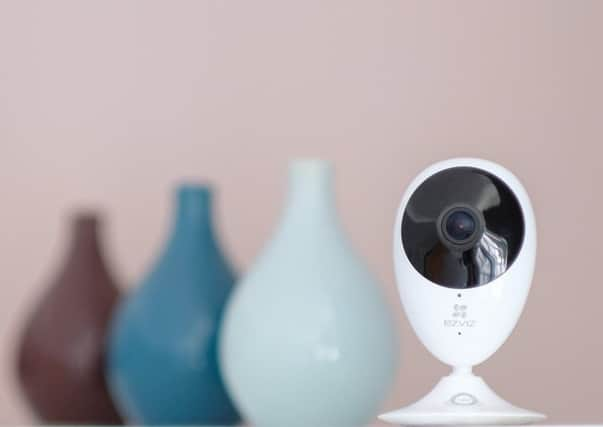Protecting your home for £35... plus the extras


Smart security cameras are useful for lots of reasons, often more so than burglar alarms – and while they won’t scare away an intruder, they won’t wake the neighbours, either.
The Ezviz Mini O is typical of the current generation of cameras. It’s sold over the counter at Argos and other high street stores and requires no installation other than connection to your wi-fi network. You just put it where you want it and plug it in. Control is via an app on your phone, and you can also communicate using virtual assistants like Amazon Alexa or Google Home.
Advertisement
Hide AdAdvertisement
Hide AdThe beauty of cameras like these is that you can call them up from your phone or a computer, no matter whether you’re in the next room or on the other side of the world. If they detect movement, they send a message to alert you.
You can also use them to conduct two-way conversations with someone back home, but it’s here that the limitations of the cheapest devices begin to become apparent.
For a start, the conversation doesn’t always happen in real-time. Many models use a system known as half-duplex, which works like an old walkie-talkie: both parties can speak but not at the same time. And although smart cameras are capable of recording what they see and storing the results for later – in the event that you need evidence of a crime, for instance – it’s almost certain that you will have to pay a monthly subscription to access them.
There is then the question of plugging them in, a process in which it quickly becomes apparent that despite the description on the box, they are not really wireless at all. It’s true that they need no wire to hook them up to the internet, but they do need mains power and that will most likely be through a very long cable that you will typically have to route along skirting boards and door frames to a position high enough for the camera to get a good shot. Doing this without making your home look like an electrical shop is a job in itself, and it applies to all cameras, cheap or not.
Advertisement
Hide AdAdvertisement
Hide AdSo it’s worth considering the layout of your house before you think about buying. In particular, decide in advance where the camera should go and look at where the nearest 13 amp socket is. Put your phone in the same position and try to get a signal, just to make sure it’s within range of your wi-fi router.
Keeping the camera potable is another option, but only if you plan to use it as a child monitor, for instance, rather than a permanent security device.
Also, check that the camera you plan to buy will accommodate an SD card for local storage of video clips. The Ezviz Mini O will take a card of up to 128GB, which you have to buy separately, for the safekeeping of the live camera feed and snapshots of any events that triggered alerts. But the options are deliberately limited, in the hope that you will take out a more flexible cloud subscription for £5 a month or £50 a year.
That makes the £35 purchase price seem more like a downpayment – but for casual surveillance, it’s still a steal.